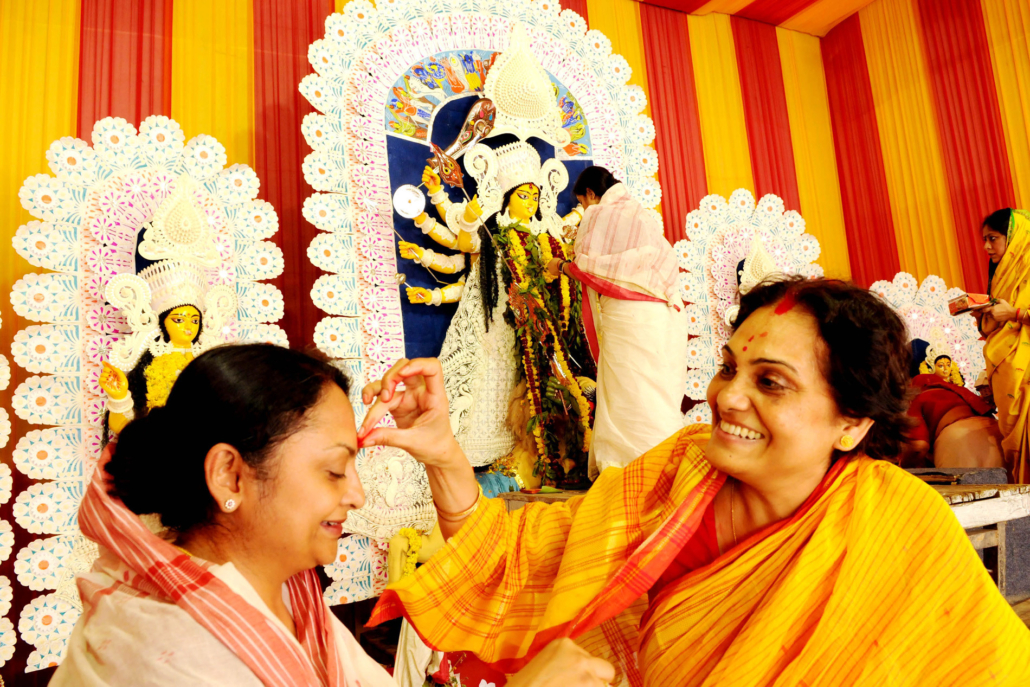Social Change and Public Displays: Durga Puja Pandals of India

In India, the month of October brings festivities and celebrations to each part of the country. In a nation full of people belonging to diverse religions and cultures, one witnesses the coming together of lights, colors and veneration with every festive season. One such festival celebrated in India is the nine-day-long Durga Puja, a worship of the nine avatars of the goddess, one on each day. Durga Puja pandals in India is paving the way for a fresh channel of social transformation.
Durga Puja for Social Purposes
Majorly celebrated in Eastern India, in the state of Bengal, Durga Puja has slowly permeated into being celebrated all over the country, complementing the migration of people to different states. On the other hand, the biggest celebration is still restricted to the state of West Bengal and its capital, Kolkata. Makeshift pavilions, known as pandals, are set up and decorated around the city with idols of the goddess being placed in them for worshipping. These huge spectacles of creativity are a magnificent sight to behold and the bright lights and traditional drum music only add to their imagery of grandeur. More often than not, the pandals are created around a specific theme that changes from year to year and pandal to pandal, becoming a way to make social statements in recent years.
In an interview with The Borgen Project, Priyanka Mukherjee, who recently visited Kolkata, India, during the festive season said “I think Durga Puja pandals in Kolkata have been a means to make a statement through art in the society, over the years. There was a pandal this year on the theme of menstruation with depictions of the uterus system and with the interior of the pandal showcasing the entire process. Apart from that, over the years, some pandals have taken ‘Sindoor Khela’ –a ritual only restricted to married women– to widows, pandals on the theme of child malnourishment, premature children, acid attack survivors and even pandals talking about mental health issues.” One of the pandals that gained popularity due to its theme was the one at Kashi Bose Lane, focusing on the theme of child trafficking and sexual abuse.
Child Trafficking in India
According to the 2023 Trafficking in Persons report, traffickers often target those who belong to the most disadvantaged groups, such as tribals and the poor. Nearly 8 million people are trapped in human trafficking in India as per an article published by the Exodus Report in 2022.
“Trafficking has become a terrifying shadow throughout the world as an organized crime. We wonder if children of all ages will ever be able to return to society after being auctioned off and sold into child labor, begging or sexual exploitation,” said Somen Dutta, general secretary of the pandal, in conversation with Kolkata Tales.
In the intersection of poverty and gender, the threat becomes much worse. According to the data by the National Crime Records Bureau of India in 2022, out of the 2,189 cases of human trafficking filed with 6,533 victims involved, 4,062, that is more than half, were female. Thus, it becomes more important than ever to address the issue of human trafficking in India. With the end goal being better policy and implementation, the first step needs to be to create awareness within the general public.
An Avenue for Awareness and Inspiring Change
This is where such public displays with a social message come in. Themed pandals have increasingly transformed into a platform for the artists of India to send a bold message to society. The pandal at Kashi Bose Lane, with its bright colors and intricate work, was imprinted in the mind and heart of every onlooker–inspiring them to think, if not take action, on the issue that plagues millions.
In an interview with The Borgen Project, Prerana Paul, who visited the pandal at Kashi Bose Lane this year, mused, “Something that stayed with me? Well, in the pandal there were models of girls in cages and swings–a depiction of their inability to move even though they wanted to, suggesting the experience and feeling that those who are trafficked go through.”
In his book “Brain Rules,” John Medina says that (three days later) humans only remember 10% of what they hear but will remember 65% of information if they consume it visually. This means that such extravagant public displays, which talk about the things that matter and issues that might usually be ignored, go a long way in impacting people’s minds and thinking.
Thus, these Durga Puja pandals in India become an inspiration for the art world, opening up a whole new avenue for social change. After all, when art speaks, people listen.
– Manasvi Kadian
Photo: Flickr
